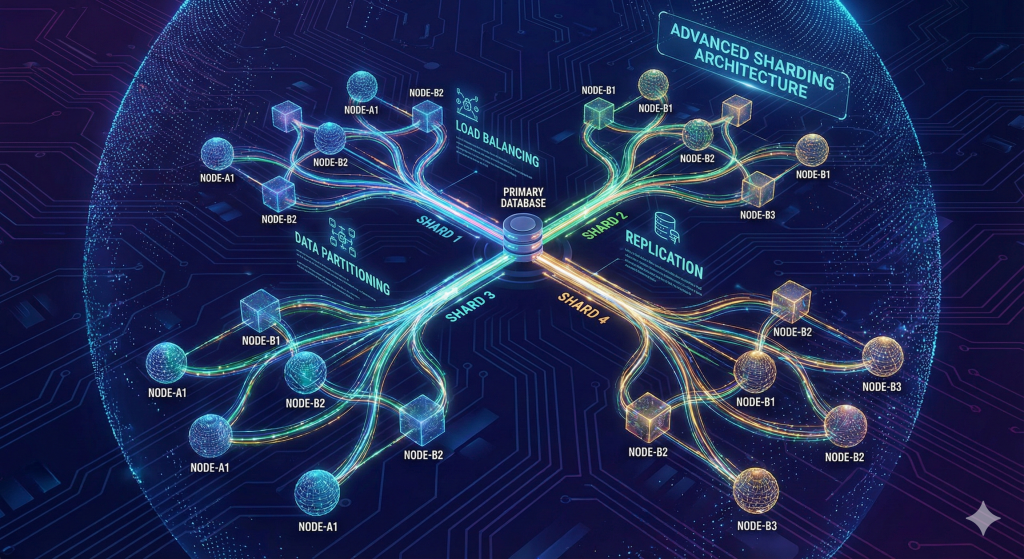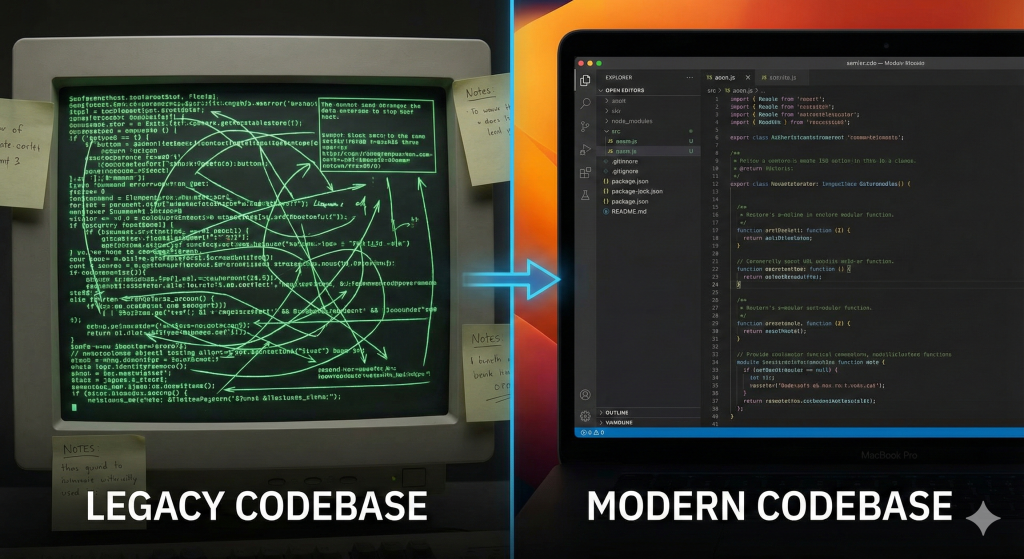Introduction: The Growing Divide Between Academia and Industry
In today’s rapidly evolving technological landscape, there is an ever-growing concern surrounding the gap between traditional academia and the dynamic demands of the software industry. Software engineering education has long served as the cornerstone for developing future technology leaders, yet many graduates still face challenges when stepping into roles that require innovative and practical skills. This divide is evident as academic institutions continue to rely on curricula that emphasize time-tested methodologies, while modern companies look for expertise in areas like cloud computing, scalable systems, and containerization. (https://blog.whoisjsonapi.com/embracing-serverless-computing-a-comprehensive-guide-to-design-architectures-and-best-practices/)
Recent research highlights that nearly 92% of organizations report a significant skills gap in software development roles. This statistic underscores the need to revisit and revamp educational practices to meet industry needs (IEEE Spectrum). The purpose of this blog post is to explore the challenges of aligning traditional software engineering education with current industry demands and to propose actionable strategies that ensure future-ready graduates.
Analyzing Current Academic Programs: Strengths and Weaknesses
Academic programs have long been the bedrock of foundational knowledge in computer science and software engineering. Their strengths lie in teaching the theoretical aspects of algorithms, data structures, and software development processes. This solid base is crucial for any budding engineer. However, these programs often struggle to keep pace with the technological innovations that drive industry demands.
One major criticism, as detailed in a study published by IEEE Spectrum, is that curricula are often designed with large enterprises in mind—emphasizing processes and methodologies that cater to traditional business models. In contrast, startups and tech companies thrive on agile methodologies that demand a rapid adaptation to change and novel problem-solving skills. This misalignment results in graduates who may excel in theory but fall short in applying these concepts in dynamic, real-world environments.
Understanding Industry Needs: Skills and Competencies in Demand
To bridge the gap between education and industry, it is essential to clearly understand what modern tech companies require from their software engineering professionals. Employers today seek candidates who not only possess theoretical knowledge but also demonstrate proficiency in emerging technologies and agile practices. Key competencies include:
- Cloud Computing and Scalable Systems: Modern applications often need to handle distributed, data-intensive loads. Knowledge of cloud platforms and distributed computing frameworks is increasingly critical.
- Containerization and Automation: Tools like Docker and Kubernetes have revolutionized the way developers deploy and manage applications. Familiarity with these tools is now a must.
- Problem-Solving and Adaptability: The capacity to apply learned concepts to solve unique industry challenges is vital, as 62% of organizations report difficulties in finding skilled talent capable of innovative thinking (Gitnux.org).
These skills underscore the need for a curriculum that not only grounds students in fundamental principles but also immerses them in emerging industry trends and technologies.
Real-World Case Studies: Educational Institutions Bridging the Gap
Across the globe, several educational institutions have begun to rethink their approach to software engineering education. Noteworthy examples include:
- University-Industry Collaborations: Universities that have partnered with tech companies to co-develop courses, labs, and workshops are seeing improved student outcomes. These partnerships often lead to the integration of real-world case studies and live projects within the curriculum.
- Specialized Bootcamps: Intensive, short-term training programs have emerged as a complementary model to traditional degrees. For instance, coding bootcamps have achieved an employment rate of approximately 71%, demonstrating the effectiveness of highly focused, skills-based training (Codeaid.io).
These case studies reveal that practical, hands-on learning experiences greatly enhance a graduate’s readiness to address contemporary software challenges.
Strategies for Curriculum Alignment: Integrating Practical Experience with Theory
To better align educational programs with current industry demands, several strategies can be implemented within the curriculum:
- Incorporating Industry-Relevant Technologies: Courses should integrate modern technologies such as cloud platforms, containerization tools (like Docker and Kubernetes), and automation practices directly into the curriculum. As highlighted in research from ArXiv, bridging theoretical knowledge with these practical tools results in highly competent graduates (ArXiv).
- Emphasizing Problem-Based Learning (PBL): Active learning techniques, such as PBL, allow students to tackle realistic industry problems, thereby honing their problem-solving skills and adaptability. PBL creates a dynamic classroom environment that mirrors real-world challenges, as evidenced by improvements discussed in studies on innovative educational models (ArXiv).
- Promoting Continuous Learning: Given that 89% of software developers advocate for continuous upskilling, educational institutions must foster a culture of lifelong learning. Facilitating access to online courses, workshops, and certification programs ensures that graduates remain current with evolving technologies. (Zipdo.co).
The Role of Industry Partnerships and Internships in Education
One of the most effective approaches to prepare students for real-world challenges is through strong industry partnerships and internship programs. By engaging directly with the tech industry, students gain invaluable exposure to current practices, workflows, and technologies. Key benefits include:
- Real-World Experience: Internships enable students to apply their learning in a practical environment, which builds confidence and readiness for full-time employment.
- Networking Opportunities: Direct engagement with industry professionals provides a platform for mentorship and career growth.
- Curriculum Feedback: Collaborations between educators and industry leaders pave the way for feedback loops. Insights gathered from the field can guide educators in continuously improving course content and teaching methods.
This symbiosis between academia and the technology sector not only enhances student learning but also fosters innovation, ensuring that graduates meet and exceed industry demands.
Innovation in Assessment: Measuring Readiness for the Software Industry
Traditional assessments, such as written exams and theoretical projects, may not fully capture a student’s readiness for modern software engineering roles. Innovative assessment techniques that focus on practical skill demonstration are essential. Some effective methods include:
- Project-Based Evaluations: Students can be assessed based on their performance on real-life projects that simulate industry challenges. This method effectively measures problem-solving capabilities, coding proficiency, and teamwork.
- Peer Reviews and Code Audits: Incorporating peer feedback and professional code reviews into assessments fosters a culture of continuous improvement and mirrors the collaborative environment found in tech companies.
- Hackathons and Competitions: These events encourage innovation and provide competitive, real-world scenarios where learners can showcase their skills under pressure.
Implementing these innovative assessment strategies will better prepare graduates for the realities of the software industry by evaluating and enhancing their practical skills.
Conclusion: Toward a Symbiotic Relationship Between Educators and Industry Leaders
The future of software engineering education lies in institutional modernization and deeper collaboration between academia and the tech industry. It is essential for educational institutions to evolve their curricula by integrating modern technologies, embracing problem-based learning, and establishing robust industry partnerships. By doing so, they not only prepare graduates for current industry demands but also foster a culture of lifelong learning necessary for continuous innovation and career growth.
In conclusion, the path to producing future-ready graduates involves bridging theoretical knowledge with practical application. Through collaborative efforts and innovative educational models, academia can successfully meet the evolving demands of the software industry. This symbiotic relationship will ultimately lead to a more dynamic and proficient workforce, ready to tackle the challenges of tomorrow.
Frequently Asked Questions (FAQ)
Q: Why is there a gap between software engineering education and industry needs?
A: Many academic programs continue to focus on longstanding theories and practices that cater to traditional enterprise models, while modern tech companies require knowledge in emerging technologies such as cloud computing, containerization, and agile methodologies. This misalignment has resulted in a skills gap that is increasingly problematic for new graduates.
Q: How can universities update their curricula to meet modern demands?
A: Universities can incorporate modern, industry-relevant technologies into their courses, adopt problem-based learning methods, and build stronger partnerships with tech companies. These strategies ensure that students not only learn theoretical principles but also apply them in practical, real-world contexts.
Q: What role do internships and industry collaborations play in bridging the gap?
A: Internships and industry collaborations provide students with real-world experience, network building, and exposure to current industry practices. They also allow for the exchange of feedback between educators and industry experts, leading to continuous curriculum improvements.
Q: How effective are bootcamps compared to traditional degree programs?
A: Bootcamps offer an intensive, focus-driven alternative to traditional degrees, with some programs reporting employment rates of around 71%. They are particularly effective in equipping students with the practical skills needed for immediate entry into the tech industry.
Final Thoughts
Bridging the gap between software engineering education and industry demands is not just a challenge but an opportunity for growth and innovation. By aligning curricula with the latest technological trends and fostering close industry partnerships, educators can ensure that graduates are well-equipped to navigate the complexities of the modern technological landscape. This proactive approach will ultimately lead to a more skilled, adaptive, and innovative workforce that drives the future of the software industry.


